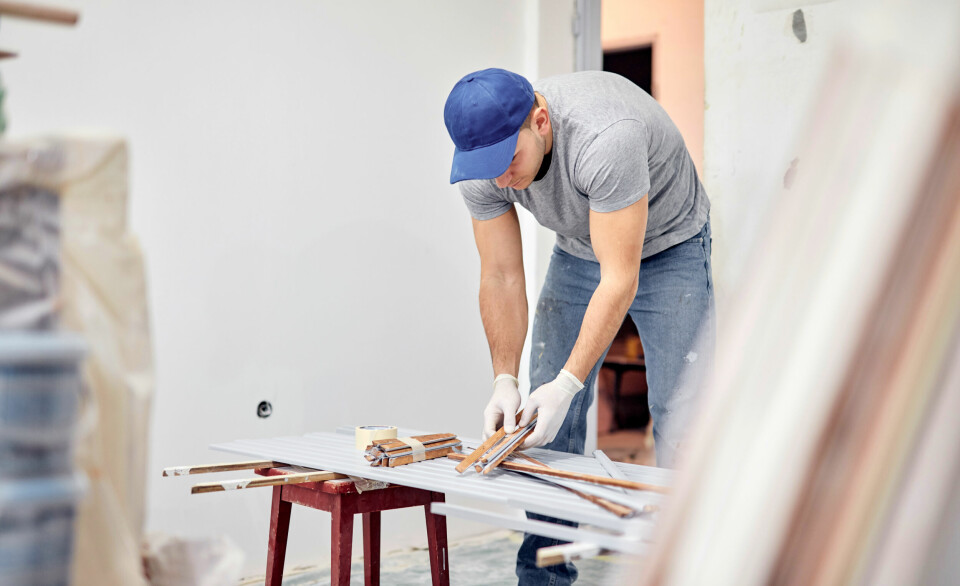-
The origins and meaning of tirer les marrons du feu
As Christmas approaches, we look at a phrase to describe someone who takes advantage of a situation
-
Drivers, cyclists and pedestrians warned of major road change in Nice
Court rules that widely used one-way seafront road must become two-way
-
Step back in time for some ‘dinosaur’ planting in your French garden
Captivated in the garden this month by one species of plant that dates back 200 million years, and another which is one of the oldest flowering plant families on the planet
Handcrafted bicycles enjoy renaissance as works of art
Some of the bicycles in this month’s Tour de France are likely to have been hand-built by a frame-builder, a cadreur in French.

These skilled craftsmen are difficult to find. It is thought there are only 30, at the most, in the country after the industrialisation of cycle-making in the 1970s reduced the demand for hand-built bicycles.
There is no formal training course. The only way to learn is on the job, from another frame-builder.
This is how 27-year old Hugo Canivenc learned his trade.
He now makes exclusive and elegant handcrafted, made-to-measure bicycles for leisure riding in town or country for Maison Tamboite, in the heart of the Faubourg Saint-Antoine, one of the last bastions of craftsmanship in Paris.
These bicycles are the Rolls- Royces of the cycling world.
Each one takes at least three months to make, is tailored to the purchaser’s physique and tastes, and is made of the highest-quality materials.
The prices too are Rolls- Royce, from €11-15,000.
Maison Tamboite – maisontamboite.fr –was started by the present owner Frédéric Jastrzebski’s great-grandfather in 1912. He dreamed of building bicycles the way sculptures are made and said they would be symbols of freedom.
By the end of the Roaring Twenties, the company was well-established and attracted some of the most famous and stylish people of the time.
Joséphine Baker, Marlene Dietrich, Sarah Bernhardt and Edith Piaf were customers.
Later, Maurice Chevalier, Charles Trenet and Coluche also owned Maison Tamboite bicycles. The company closed when bicycles started being mass-produced, but five years ago the doors were re-opened as handcrafted became fashionable again.
Mr Jastrzebski’s order books are full but he will not say if the famous are still among the company’s clients. Discretion is part of the service he offers in this exclusive world.
He said about five bicycles are being worked on at any one time. Most of the work is done in his workshops, though some of the details, such as the leatherwork, are handed out to local craftsmen.
About five people are involved in the creation of one bicycle. He admits his bicycles are very expensive, but said: “It is not enough, when you consider the amount and high level of craftsmanship that is involved, and you compare it to the price of other, smaller, handcrafted items.”
Mr Canivenc started very young in the business.
He said: “I did not get on well at school and left after the collège brevet. I had always been keen on cycling and was also fascinated by the technical side and how they were built.
“I applied for an apprenticeship with Cyfac, which creates handbuilt bicycles in Indre-et-Loire. I learned everything from the head of the workshop, who had 40 years of experience. He passed on his skills to me during the two years before he retired.”
Mr Canivenc learned how to create a frame and, now he is at Maison Tamboite, he has extended his skills to include design and conception and takes particular pleasure in working on the detail: “Every bolt, every screw is worked on to perfection.
“There is not one part of the bicycle that is not finished to the same standard. I pay particular attention to the coupling parts of the frame, for which I apply brazing techniques using silver. It is a very delicate procedure, which is closer to making jewellery or clockwork mechanisms than bicycles.
“You have to want to learn every aspect, as there are many different techniques involved. You have to be meticulous and patient, as doing things well takes time.
“It also helps to have a passion for the cycling world and to be attracted to architecture and design. We are influenced by other styles around us.
“For example, the use of varnished wood is reminiscent of the boat-building world.”
He gets great satisfaction from his work and said: “When a bicycle leaves the workshop, there is a sense of pride, because you know that it is a product that will last, perhaps for generations beyond the person who buys it.”
Mr Jastrzebski said the difference between buying a handbuilt bike over one made in a factory is that it will be long-lasting and also that there will be a great deal of comfort for the rider.
“We take 15 measurements from each client to ensure each bicycle will be perfectly adapted to their morphology and cycling style.
“It is the equivalent to buying a tailor-made suit rather than one off the peg.”
His cycles have been referred to as works of art, and one has been exhibited in the Gobelins Museum, but Mr Jastrzebski says he prefers another term: “They are artisanal, which is a noble classification.
“Works of art are made to express the creative ideas of the artist. Craftsmen make objects, which are there to suit the desires of the client. Their place is not in an art gallery but on the streets, on holiday, to be ridden by the sea, in the mountains and in the countryside.”
























